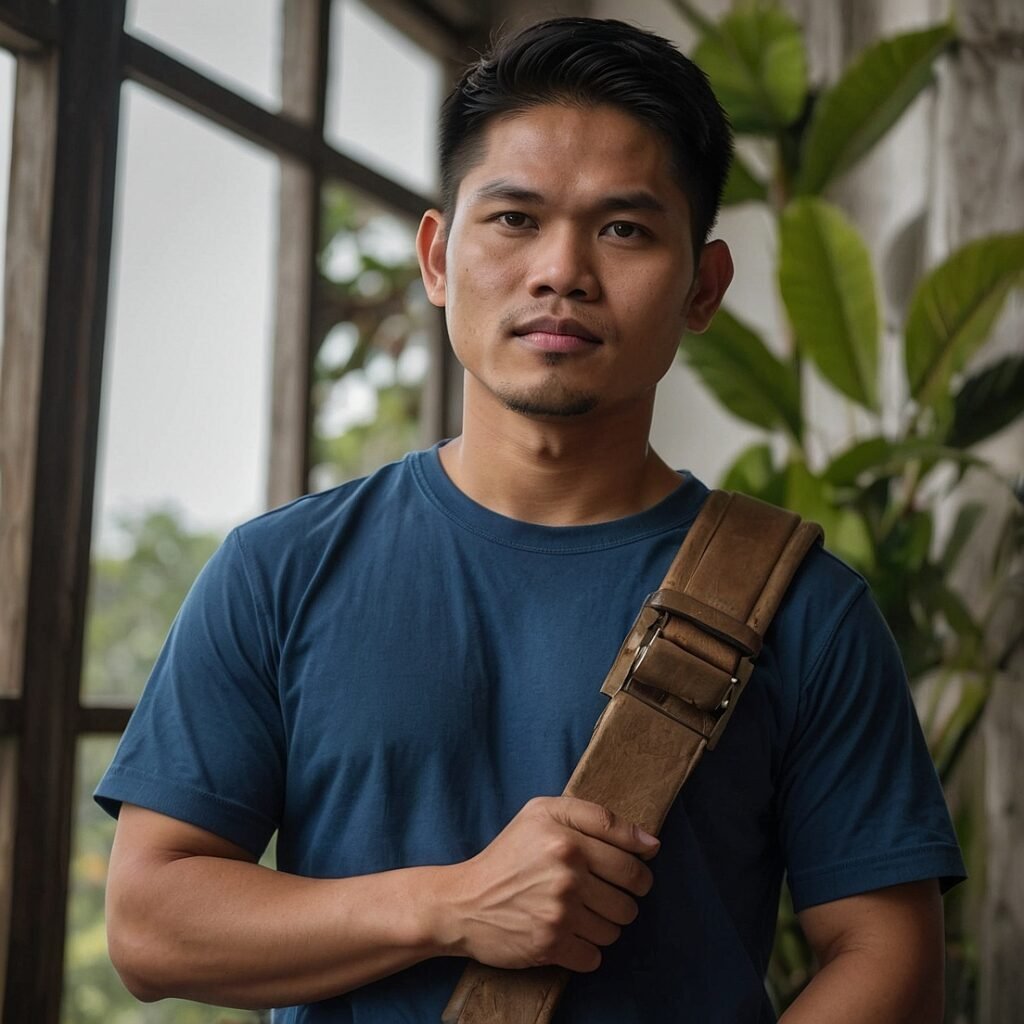In the rich tapestry of Filipino culture, one concept stands out as a fundamental pillar of social interaction and personal conduct: “hiya.” This deeply ingrained cultural value, often translated as “shame” or “propriety,” plays a crucial role in shaping Filipino behavior, relationships, and societal norms. Understanding hiya is essential for anyone seeking to comprehend the intricacies of Filipino culture and the motivations behind many Filipino actions and decisions. This blog post delves into the multifaceted nature of hiya, exploring its origins, manifestations, and impact on Filipino society.
The Concept of Hiya
Definition and Etymology
Hiya is a complex concept that defies simple translation. While often rendered in English as “shame,” “embarrassment,” or “propriety,” these terms fail to capture the full depth and nuance of the Filipino understanding. At its core, hiya embodies a sense of social awareness, a desire to maintain harmonious relationships, and a keen sensitivity to one’s place within the community.
The word “hiya” itself is believed to have roots in ancient Filipino languages, with cognates found in various regional dialects across the Philippines. Its ubiquity in Filipino languages underscores its central importance to the culture.
Cultural Context
To truly grasp the concept of hiya, one must understand the collectivist nature of Filipino society. Unlike more individualistic cultures, Filipino society places a strong emphasis on group harmony, social cohesion, and interdependence. Within this context, hiya serves as a social lubricant, helping to maintain smooth interpersonal relationships and prevent conflicts.
Hiya is closely intertwined with other core Filipino values, such as:
| Value | Description |
|---|---|
| Pakikisama | The ability to get along with others |
| Utang na loob | A sense of indebtedness or reciprocity |
| Kapwa | A shared sense of identity with others |
| Amor propio | Self-esteem or dignity |
These values work in concert with hiya to create a complex social framework that guides Filipino behavior and decision-making.
Manifestations of Hiya
In Personal Conduct
Hiya manifests in numerous ways in personal conduct. Filipinos often go to great lengths to avoid causing offense or embarrassment to others, even at the expense of their own comfort or convenience. This might involve:
- Refraining from directly contradicting or criticizing others, especially those in positions of authority
- Avoiding public displays of anger or frustration
- Maintaining a polite and deferential demeanor in social interactions
- Prioritizing group harmony over individual desires or opinions
These behaviors are not merely superficial etiquette but stem from a deep-seated desire to maintain social harmony and preserve one’s own dignity within the community.
In Social Interactions
The influence of hiya is particularly evident in social interactions. Filipinos often engage in elaborate social rituals and courtesies designed to show respect and avoid causing offense. Some examples include:
- The use of honorific titles and respectful language when addressing elders or authority figures
- The practice of “pagmamano,” where younger individuals show respect to elders by taking the elder’s hand and pressing it to their forehead
- The tendency to offer food or hospitality to guests, even when doing so may be financially burdensome
- The reluctance to refuse requests or invitations directly, often preferring indirect or ambiguous responses to avoid causing offense
These practices reflect the high value placed on maintaining smooth social relationships and avoiding situations that might lead to hiya or loss of face for any party involved.
In Decision Making
Hiya also plays a significant role in decision-making processes, both on an individual and societal level. The fear of experiencing or causing hiya can influence choices in various domains, including:
- Career decisions: Individuals may choose career paths based on family expectations or societal prestige rather than personal preferences.
- Education: Students may be reluctant to ask questions or seek help, fearing that doing so might reveal their lack of knowledge and cause embarrassment.
- Financial matters: People may engage in conspicuous consumption or take on debt to maintain appearances and avoid the hiya associated with perceived poverty.
- Conflict resolution: There is often a preference for informal mediation or indirect communication to resolve conflicts, rather than direct confrontation or legal action.
These decision-making patterns reflect the pervasive influence of hiya on Filipino thought processes and behavior.
Historical and Cultural Roots
Pre-colonial Influences
The concept of hiya has deep roots in pre-colonial Filipino society. Ancient Filipino communities were typically organized into small, closely-knit groups where social harmony was essential for survival and prosperity. In this context, hiya served as a crucial mechanism for maintaining order and cohesion.
Archaeological and anthropological evidence suggests that pre-colonial Filipino societies had complex systems of social etiquette and reciprocity, which laid the groundwork for the modern understanding of hiya. These early social norms emphasized:
- Respect for elders and authority figures
- The importance of reciprocity in social relationships
- The maintenance of social harmony through conflict avoidance
These elements continue to be central to the concept of hiya in contemporary Filipino culture.
Colonial Influences
The long history of colonization in the Philippines has also left its mark on the concept of hiya. Spanish colonization, which lasted for over three centuries, introduced Catholic values and a hierarchical social structure that reinforced and expanded existing notions of propriety and shame.
The American colonial period, while shorter, brought new influences that both challenged and reinforced aspects of hiya. The introduction of American-style education and democratic ideals created some tension with traditional Filipino values, but also provided new contexts in which hiya could operate.
Table: Colonial Influences on Hiya
| Colonial Power | Period | Key Influences |
|---|---|---|
| Spain | 1565-1898 | Catholic values, hierarchical social structure |
| United States | 1898-1946 | Democratic ideals, American-style education |
These colonial influences interacted with pre-existing Filipino values to shape the modern understanding of hiya.
Psychological and Sociological Perspectives
Individual Psychology
From a psychological perspective, hiya can be understood as a complex emotional and cognitive construct that influences individual behavior and self-concept. Some key psychological aspects of hiya include:
- Self-awareness: Hiya involves a heightened awareness of one’s actions and their potential impact on others.
- Emotional regulation: The desire to avoid hiya often leads individuals to regulate their emotions and behaviors in social situations.
- Identity formation: The internalization of hiya plays a significant role in shaping personal identity and values.
- Motivation: Hiya can serve as a powerful motivator, driving individuals to adhere to social norms and strive for social approval.
Understanding these psychological dimensions can provide insight into the profound impact hiya has on individual Filipinos’ thoughts, feelings, and behaviors.
Social Psychology
In terms of social psychology, hiya can be viewed as a mechanism for maintaining social order and promoting group cohesion. Key social psychological aspects include:
- Social norms: Hiya reinforces adherence to social norms and expectations.
- Group dynamics: The concept plays a crucial role in shaping in-group/out-group dynamics and social hierarchies.
- Conflict avoidance: Hiya promotes indirect communication styles and conflict resolution strategies that prioritize harmony over direct confrontation.
- Social cognition: The internalization of hiya influences how Filipinos perceive and interpret social situations and others’ behaviors.
These social psychological dimensions highlight the role of hiya in maintaining the fabric of Filipino society.
Hiya in Contemporary Filipino Society
Urbanization and Modernization
As the Philippines undergoes rapid urbanization and modernization, the role and expression of hiya are evolving. Urban environments, with their increased anonymity and diverse social networks, present new challenges and contexts for the operation of hiya. Some observable trends include:
- A relaxation of certain traditional forms of social etiquette in urban settings
- The emergence of new forms of hiya related to professional and online contexts
- Tensions between traditional values and modern, global influences
Despite these changes, hiya remains a significant force in shaping Filipino behavior and decision-making, even in highly urbanized environments.
Generational Differences
There are notable generational differences in the understanding and expression of hiya. Older generations tend to adhere more strictly to traditional interpretations, while younger Filipinos may have a more flexible approach. Some key differences include:
| Aspect | Older Generations | Younger Generations |
|---|---|---|
| Expression | More formal, rigid adherence to social norms | More relaxed, situational application of hiya |
| Context | Primarily face-to-face interactions | Includes online and digital contexts |
| Attitudes | Stronger emphasis on hierarchical respect | More egalitarian interpretations of respect |
These generational differences reflect broader social changes and the ongoing negotiation of cultural values in contemporary Filipino society.
Global Filipino Diaspora
The large Filipino diaspora presents interesting case studies in the persistence and adaptation of hiya in different cultural contexts. Filipinos living abroad often find themselves navigating between their internalized sense of hiya and the social norms of their host countries. This can lead to:
- Cultural hybridization, where aspects of hiya are blended with local cultural norms
- Reinforcement of hiya as a marker of Filipino identity in multicultural settings
- Intergenerational tensions within Filipino immigrant communities regarding the appropriate expression of hiya
The experiences of the Filipino diaspora highlight both the resilience and adaptability of hiya as a cultural concept.
Criticisms and Debates
Potential Negative Impacts
While hiya plays a crucial role in maintaining social harmony, some critics argue that it can have negative impacts on individual and societal development. Potential drawbacks include:
- Inhibition of critical thinking and open debate
- Reluctance to seek help or admit mistakes, potentially hindering personal growth and problem-solving
- Perpetuation of harmful social hierarchies and power imbalances
- Suppression of individual desires and aspirations in favor of social conformity
These criticisms highlight the complex nature of hiya and the need for a nuanced understanding of its role in Filipino society.
Cultural Relativism vs. Universal Values
The concept of hiya raises important questions about cultural relativism and universal values. Some argue that hiya represents a unique cultural adaptation that should be respected and preserved. Others contend that certain aspects of hiya may conflict with universal human rights or principles of individual autonomy.
This debate reflects broader discussions about the balance between cultural preservation and global ethical standards. It also underscores the importance of understanding hiya within its cultural context while remaining open to critical examination of its impacts.
Conclusion
Hiya stands as a testament to the rich complexity of Filipino culture. This deeply ingrained sense of shame and propriety shapes nearly every aspect of Filipino social life, from personal conduct to national decision-making. While its manifestations may evolve in response to modernization and globalization, the core principles of hiya continue to play a vital role in maintaining social harmony and defining Filipino identity.
Understanding hiya is crucial not only for those seeking to engage with Filipino culture but also for Filipinos themselves as they navigate the challenges of the modern world. By examining the historical roots, psychological dimensions, and contemporary expressions of hiya, we gain valuable insights into the Filipino worldview and the intricate social fabric that binds Filipino communities together.
As the Philippines continues to develop and engage with the global community, the concept of hiya will undoubtedly continue to evolve. However, its fundamental importance in shaping Filipino values, behavior, and identity is likely to persist, serving as a bridge between tradition and modernity in this vibrant and dynamic culture.
Disclaimer: This blog post is based on research and information available up to 2017. While every effort has been made to ensure accuracy, cultural concepts like hiya are complex and subject to ongoing interpretation and change. Readers are encouraged to engage in further research and to consider multiple perspectives on this topic. If you notice any inaccuracies in this post, please report them so we can correct them promptly.




